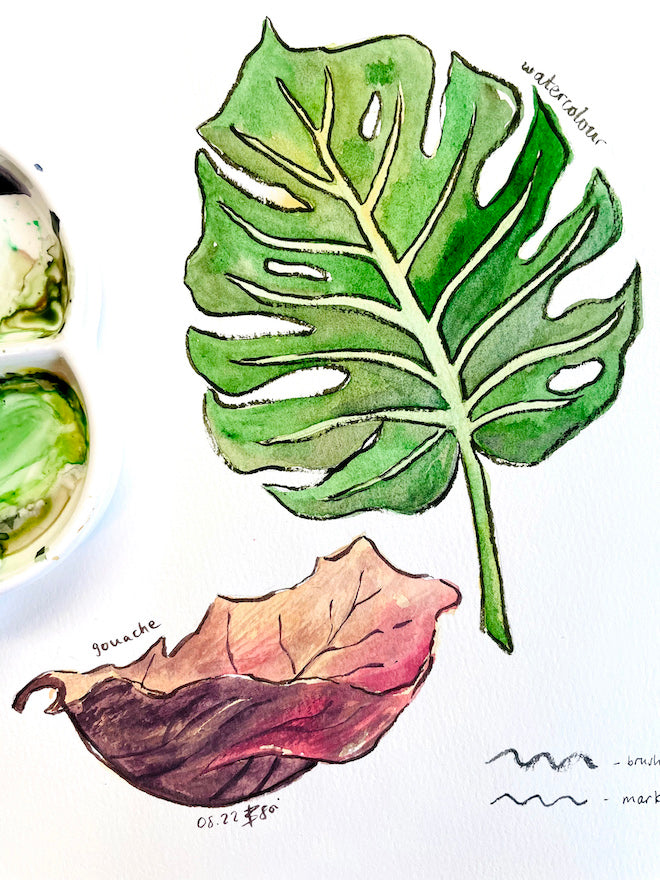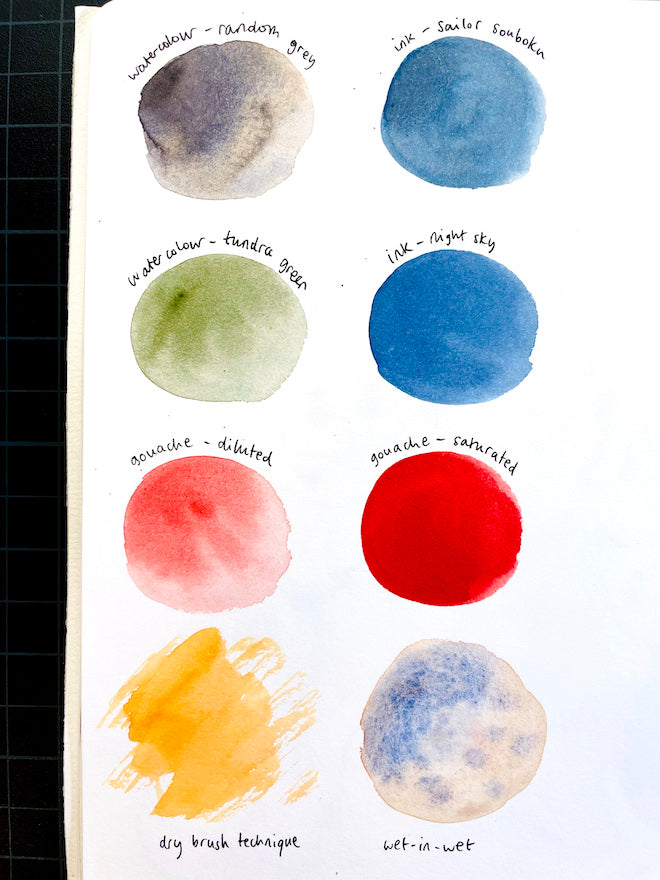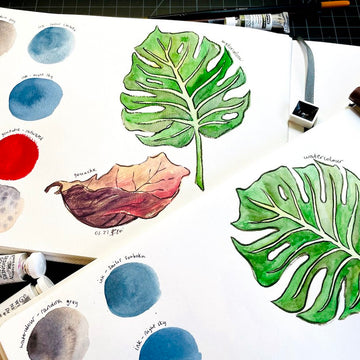As many artists know, selecting the right surface to make art on is just as important as choosing the right paints! Here, I’ll show which watercolour papers pair with which medium, and how to pick the perfect match for you.
Cold Press Paper

Out of the usual watercolour papers, cold press is arguably the most widely used, simply because it’s got a good balance of tooth and smoothness.
Depending on the brand you use, cold press paper has a bit of texture on its surface due to how it’s processed. As its name suggests, the texture comes from having the pulp fibres pressed out at a cold temperature, which means the paper then retains some of that texture when dried.

Due to this extra “tooth”, cold press paper can generally absorb water a bit better than hot press paper, plus wet techniques are more easily controlled since the paint puddles settle better into the textured grooves.
This means it’s not only a great paper to use for watercolours, but it’s also good for most water-based media, such as ink or gouache. It’s especially suitable for granulating watercolours because the pigments clump inside the grooves of the paper, which makes the granulating effect more prominent (if you like that kind of effect).

Cold press paper’s texture works well in the opposite direction, too – you can get some great dry brush textures by quickly running a brush with a little bit of paint over the surface of the paper. The bumps on the paper pick up some of the paint, while the grooves get “skipped over” for a flaked look.
In summary:
Pros:
● Medium textured surface makes it more absorbent and suitable for granulating paints
● Great for watercolours, inks, and diluted water-based paints
● Enhanced dry brush effect
Cons:
● Can end up with a lot of little white holes when painting with less diluted paint
● Hard to paint smoothly if using a thick layer of gouache
● Drawing on it using a pen or pencil may produce “skips” in the line, and may wear down the nib faster
Regardless, cold press paper isn’t every artist’s cup of tea, so if you want something smooth, then read on…
Hot Press Paper

Like with cold press, hot press paper is made the same way, only this time, the pulp fibres are pressed under (you guessed it!) a hot temperature. This makes it visibly and texturally much smoother than cold press paper while still being thick enough to handle wet media.

However, because it’s so much smoother, watercolours (which are very wet) and wet-on-wet techniques can cause the paint to kind of slide along the surface and may create blooms or streakiness in areas that you don’t want. The extra smoothness also means it can handle thicker paints like gouache or poster paint better without leaving behind a lot of little white holes.

So if your style leans more toward a flat wash or flat blocks of colour, then hot press paper will be more suited for you! It’s also very compatible with pens and markers, especially if you want your lines to be crispy and clean. However, it doesn’t seem to layer as well, since the smooth surface is more easily affected than cold press’ rougher surface.
In summary:
Pros:
● Smooth surface makes for a buttery experience when using gouache or poster paint, or pens and markers
● Great for scanning after
● Great if you want very flat washes
Cons:
● Can produce streakier results when using watercolour
● More difficult to get a good dry brush effect
● Slightly less absorbent than cold press, so too much water on its surface may end up sliding everywhere
Hot or Cold – It’s Up to You

The bottom line is: use cold press if you like more texture and use hot press for a smoother look. In general, though, you can use any water-based paint on either paper. It’s just that cold press has a slight edge on watercolours, while hot press feels easier to paint on when using gouache or pen media.
If you’re still unsure, why not try a sample of both? Sample papers are a great way to try something without spending too much money on committing to one or the other. Or, you may just end up like me and use both for different paintings and purposes!
Either way, I hope you find what’s right for you, so have fun experimenting – both with paints and with different papers.
Have you found a favourite line type and tool yet? How do you think these lines affect a painting? Let us know in the comments below!
In addition, if you want to learn more tips and tricks about art, feel free to subscribe to our email newsletter. Whether you’re a beginner or a professional artist, we’ll notify you of all the latest happenings with Etchr!


